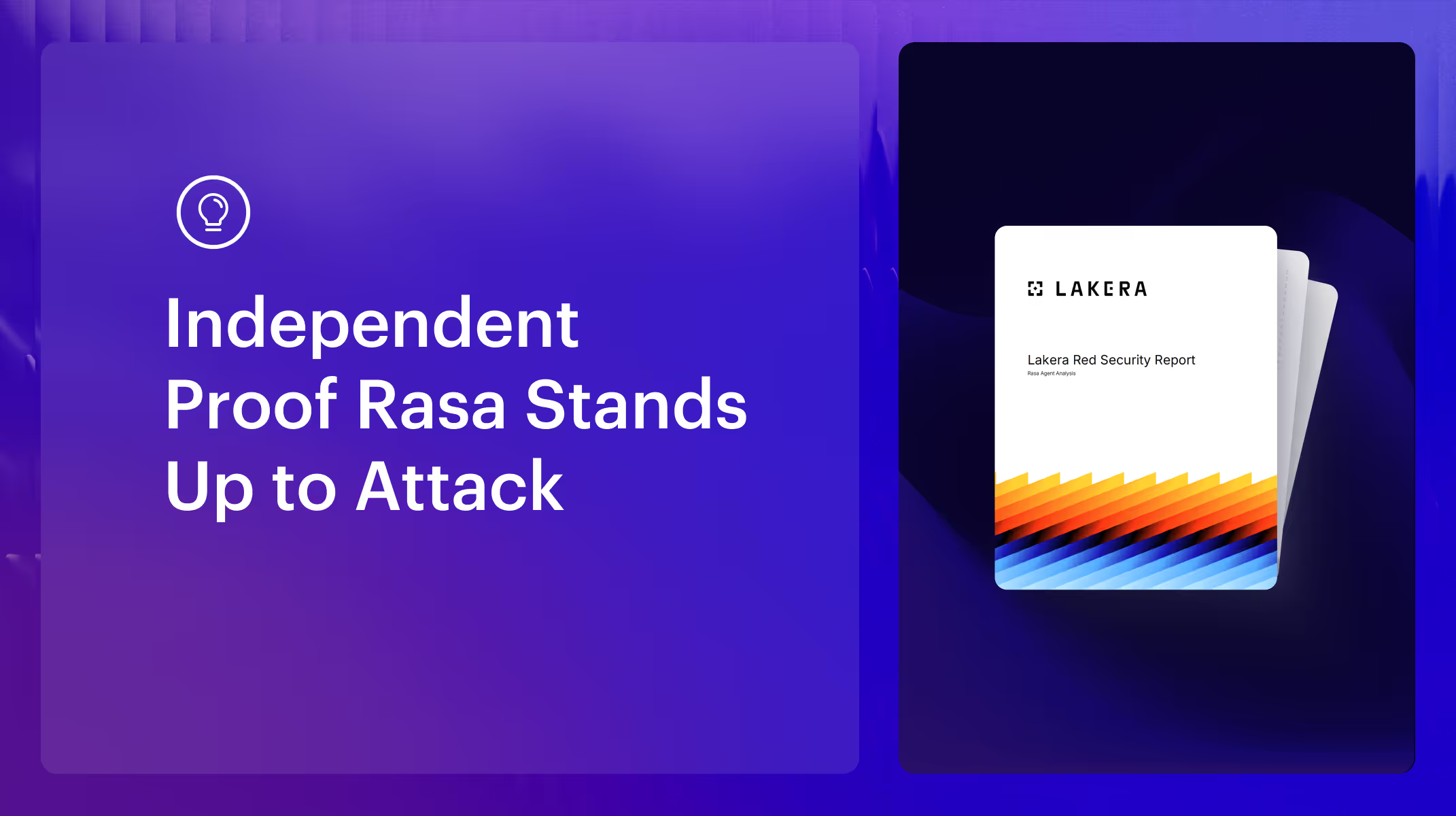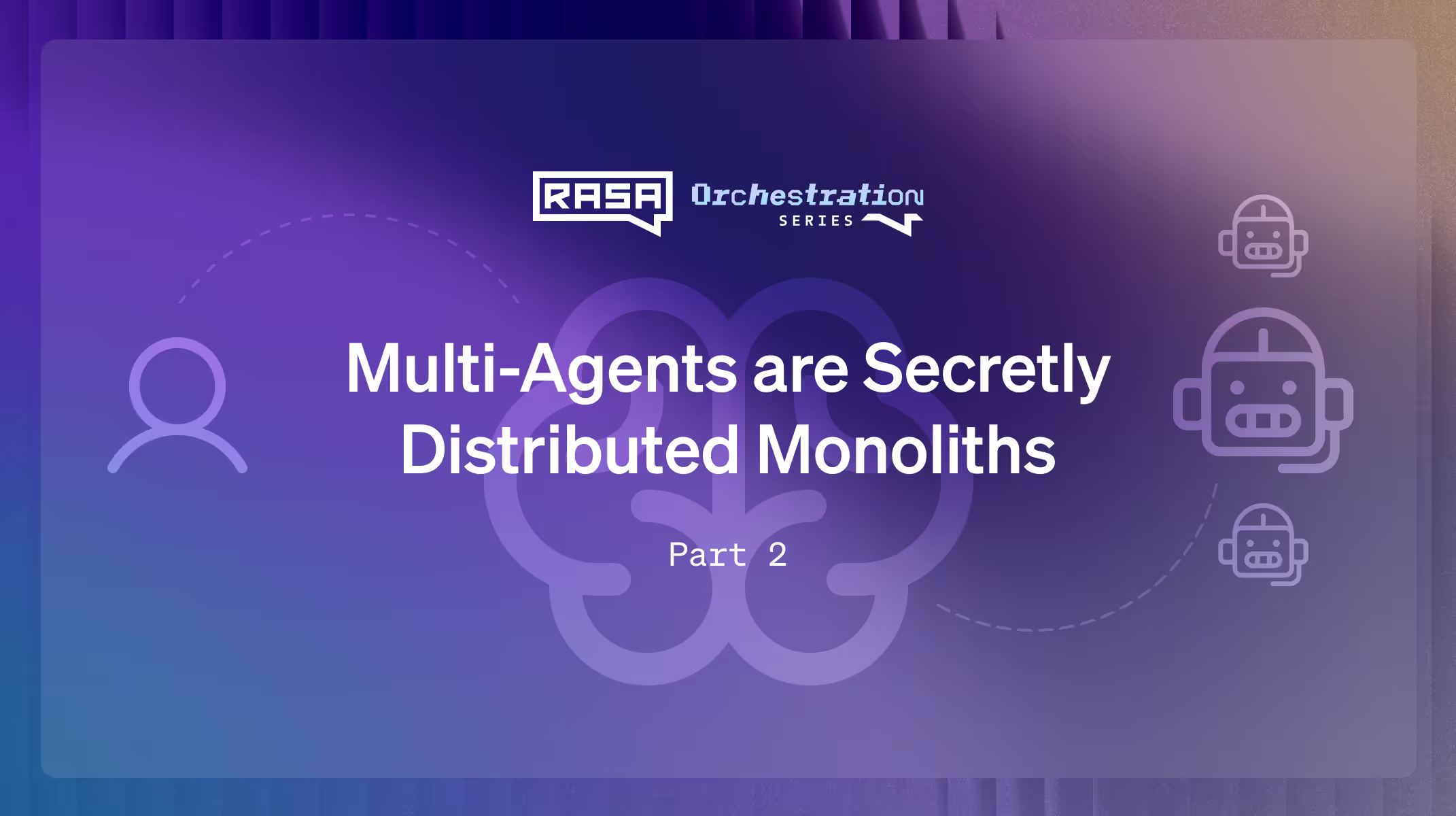Businesses increasingly use AI-powered solutions to enhance customer interactions, automate workflows, and scale support operations. But not all AI-driven assistants are the same. While traditional chatbots offer basic automation, conversational AI provides a more advanced, dynamic experience that understands context and intent.
It's crucial for enterprises evaluating these technologies to understand the differences. A rule-based chatbot can handle straightforward, repetitive tasks, but conversational AI is the next step forward for deeper engagement, personalized responses, and more complex messaging workflows.
This blog explores the distinctions between chatbots and conversational artificial intelligence (AI), highlights their key capabilities, and guides you in selecting the right solution for your business needs.

What Are Chatbots?
Chatbots are automated programs that simulate human conversation, typically through text-based conversational interfaces. They follow predefined scripts or rule-based workflows to respond to user queries and complete basic tasks. While they can improve efficiency by handling routine interactions, they lack the flexibility to understand context or adapt to complex conversations.
Rule-Based Chatbots in Action
Most chatbots use a rule-based system, relying on predefined triggers and scripted responses to engage with users. This structure makes them effective for simple, repetitive tasks but limits their ability to handle unexpected inputs.
How rule-based chatbots work:
- A user submits a query, such as “What are your business hours?”
- The chatbot matches the query to a predefined intent and provides a scripted response.
- If the query doesn’t match programmed responses, the chatbot asks the user to rephrase or escalates the conversation to a human agent.
Limitations of rule-based chatbots:
- Struggle with complex, multi-turn conversations and interruptions.For example, a user might ask about their current balance during a money transfer. A rule-based chatbot will struggle with the following conversation:
- User: I want to send some money to Sudarshana
Bot: How much do you want to send to Sudarshana?
User: Ah wait, how much money do I have? - Cannot interpret intent beyond predefined commands.
- Fail to provide personalized interactions without human intervention.
- Difficulty leveraging conversational context to understand the end-user. For example, in the Retail industry, an end-user may want to cancel their biggest active order, but the chatbot might not understand what "biggest order" means.
- Struggle with corrections from the end-user, such as, “Sorry,I have made an error. I wanted to say Tuesday.” A rule-based chatbot cannot understand that the end-user is changing a previously selected option.
For enterprises with high customer service demands, these limitations make rule-based chatbots a stepping stone rather than a long-term solution.
Types of Chatbot Use Cases for Enterprises
Chatbots are important in enterprise operations despite their limitations, particularly for handling straightforward, high-volume interactions.
Common enterprise use cases:
- FAQ automation: Chatbots respond to simple frequently asked customer queries, reducing wait times and freeing human agents or support teams for more complex inquiries that require human interaction.
- Basic customer support: Users can get quick answers to account-related questions, such as password resets, order status updates, and tracking shipments.
- Support request routing: AI assistants direct customer inquiries to the appropriate department, ensuring faster resolution and improved efficiency.
- Feedback collection: Chatbots gather customer insights through surveys and post-interaction feedback, helping businesses refine their services.
Chatbots offer a cost-effective way to enhance operational efficiency for businesses that automate predictable tasks without requiring advanced AI capabilities. However, as user expectations evolve, many enterprises are looking for solutions beyond rule-based automation-leading to the rise of conversational AI.

What Is Conversational AI?
Conversational AI is an AI-powered chatbot technology that uses large language models (LLMs), natural language processing (NLP), and machine learning to create dynamic, context-aware interactions. Unlike rule-based chatbots, which follow scripted paths, conversational AI can interpret intent, understand context, and adapt responses in real-time, delivering more meaningful and human-like interactions.
Why does this matter for enterprises?
- Conversational AI can handle complex, multi-turn conversations, even when users deviate from expected paths.
- It learns from interactions to improve response accuracy over time.
- Enterprises can use it to personalize interactions at scale, making customer engagement more seamless and efficient.
By moving beyond rigid rule-based structures, conversational AI enables businesses to provide smarter, more responsive interactions that meet modern user expectations.
How Generative AI Powers Conversational AI
Generative AI takes conversational AI to the next level by enabling chatbots to produce fluid, natural responses rather than relying on predefined scripts. With its ability to generate contextually relevant and nuanced dialogue, generative AI significantly enhances the quality and flexibility of AI-powered interactions.
Key ways generative AI improves conversational AI:
- Better context retention: Conversational AI can remember user details across interactions, ensuring more coherent conversations.
- More adaptable responses: Unlike static responses, generative AI can rephrase answers based on user input, making interactions more natural.
- Dynamic personalization: AI can finetune responses based on user history, preferences, and past conversations, creating a more engaging experience.
- Better dialogue understanding: Advanced NLP models improve intent recognition and context awareness, reducing misinterpretations.
Conversational AI Use Cases for Enterprises
Large enterprises require AI solutions that do more than answer FAQs-they need AI that can understand complex user needs, automate conversation flows, and drive business outcomes.
Key enterprise use cases:
- Personalized and advanced customer service: Conversational AI can analyze past interactions so each customer receives relevant and contextual responses.
- Cross-functional workflows: AI-driven assistants streamline operations by integrating with internal systems, helping teams manage workflows, retrieve data, and automate routine tasks.
- Data-driven engagement: By analyzing customer behavior, conversational AI can recommend products, flag unusual activity, or offer proactive support-turning interactions into strategic business opportunities.
- Voice AI for call deflection: AI-powered voice assistants can handle routine phone inquiries, reducing call center congestion and freeing human agents for more complex tasks.
- Complex transaction processing: Conversational AI enables complex financial transactions, approvals, and verifications while ensuring compliance and security.
- Complex FAQ: AI-powered assistants handle intricate FAQs that require contextual understanding, improving resolution rates without human intervention.
Industries leveraging conversational AI:
- BFSI (Banking, Financial Services, and Insurance): AI assistants help customers with fraud detection, loan applications, and investment guidance.
- Telecommunications: Conversational AI reduces call center load by handling billing inquiries, plan upgrades, and troubleshooting issues (i.e., the AI assistant helping you reset your router).
- Healthcare: AI-powered assistants assist with appointment scheduling, patient follow-ups, and medical inquiries while ensuring compliance with privacy regulations.
- Technology: AI chatbots enhance IT support, assist with software troubleshooting, and provide automated onboarding for SaaS products.
- Retail and e-commerce: AI-driven bots assist with product recommendations, order tracking, and personalized shopping experiences, improving customer retention.
Chatbots vs. Conversational AI: Key Differences to Note
While both chatbots and conversational AI assist users through automated interactions, their capabilities and flexibility vary significantly. Below is a breakdown of the key differences:
FeatureChatbots (Rule-Based)Conversational AIUnderstandingFollows predefined rules and scriptsUses NLP, LLMs, and machine learning for context-aware interactionsFlexibilityLimited to fixed decision treesAdapts to user intent, learns from interactionsHandling ComplexityCan only manage simple, structured queriesHandles multi-step workflows, interruptions, and ambiguous inputsUser ExperienceLinear, menu-driven conversationsEngages naturally, remembers context, and refines responses dynamicallyLearning AbilityStatic-requires manual updates for improvementsContinuously improves using AI-driven learning and feedback loopsScalabilityDifficult to expand beyond initial scopeDesigned for enterprise-scale, cross-channel interactionsIntegrationBasic API connectionsConnects with CRMs, ERPs, knowledge bases, and voice systems for seamless automation
Why Conversational AI Outperforms Traditional Chatbots
- Understands intent and context: Unlike chatbots that follow rigid scripts, conversational AI systems process natural language to extract meaning and respond accordingly.
- Handles complex requests: Supports multi-turn interactions, allowing users to switch topics or refine their queries without starting over.
- Enhances personalization: Uses past interactions and real-time data to provide relatable responses.
- Reduces friction: Offers a smoother experience by recognizing misinterpretations and adapting dynamically.
How Can You Tell Which Type of Technology Is Right for Your Needs?
Choosing between a rule-based chatbot and a conversational AI assistant depends on your business goals, existing technology infrastructure, and the level of automation required. Decision-makers should consider the following factors:
- Business goals: A chatbot may be enough if the focus is on handling simple FAQs. Conversational AI is a better fit for personalized conversational experiences or multi-step processes.
- Existing tech stack: Organizations already using AI-driven tools may find it easier to integrate conversational AI rather than maintaining multiple basic chatbots.
- Scalability needs: Enterprises expecting high customer interaction volumes or requiring multi-channel support should opt for conversational AI to manage complexity efficiently.
- Compliance and security: Industries like BFSI, healthcare, and government require AI-driven solutions that meet strict data privacy and compliance regulations.
Customer Experience as a Deciding Factor
Customer interaction quality is critical when determining whether a chatbot or conversational AI solution is best for your organization.
How conversational AI enhances customer satisfaction:
- Personalization: AI-powered assistants analyze past interactions and behavioral data to provide more relevant responses.
- Efficiency: Customers receive accurate answers faster, without rigid chatbot flow restrictions.
- Seamless fraud prevention: For example, a bank’s AI assistant can recognize unusual spending patterns, verify transactions, and guide users through identity verification-preventing fraud while minimizing customer friction.
- Context retention: Unlike chatbots that reset after each session, conversational AI remembers past conversations and refines responses based on historical interactions.
Rasa’s Perspective on Conversational AI Chatbots
Conversational AI is the next evolution in enterprise communication, enabling businesses to move beyond scripted interactions toward context-aware, dynamic conversations. Organizations need solutions that scale, adapt, and integrate seamlessly while ensuring compliance and reliability.
At Rasa, we’ve built a flexible, enterprise-ready conversational AI platform that empowers businesses to create AI-driven assistants with greater control, security, and efficiency. Unlike rigid chatbot solutions, Rasa enables enterprises to design assistants that can handle real-world complexity while maintaining accuracy.
How Rasa enhances conversational AI:
- Conversation repair: Users often change topics or ask follow-up questions. Rasa automatically manages digressions and topic shifts to keep interactions fluid and avoid frustration.
- LLM-agnosticism: Enterprises aren’t locked into a single LLM provider. With Rasa, businesses can choose, switch, or integrate multiple LLMs based on their needs-ensuring flexibility and cost control.
- Enterprise compliance: Industries like BFSI, healthcare, and government require strict data privacy controls. Rasa supports on-premise deployments, giving enterprises full data ownership and ensuring compliance with GDPR and PCI DSS regulations.
- Accurate framework: Unlike traditional LLM-based assistants that risk generating hallucinated responses, Rasa’s CALM (Conversational AI with Language Models) framework ensures AI assistants stay on track, reducing misinformation while maintaining business integrity.
- No-code UI: Rasa Studio enables subject matter experts and designers to build, modify, and optimize AI assistants-integrating them directly into the development process without requiring a dedicated AI engineering team.
- Custom actions for integrations: Rasa’s custom actions enable AI assistants to trigger API calls, query databases, and execute real-time tasks like checking balances or scheduling appointments.
By addressing common enterprise challenges, Rasa helps organizations build AI assistants that are scalable, secure, and truly conversational-ensuring better user experiences and operational efficiency.
Create Better Customer Experiences with the Right AI Technology
Choosing the right AI solution depends on business goals, customer expectations, and scalability needs. While rule-based chatbots offer simplicity for handling structured tasks, conversational AI delivers dynamic, context-aware interactions that improve customer engagement and operational efficiency.
For enterprises looking to scale automation, enhance user experiences, and maintain strict compliance, Rasa provides a powerful, flexible solution:
- Control and flexibility: Enterprises can customize AI assistants to fit their workflows while maintaining control over data and deployment.
- Advanced AI capabilities: With LLM-agnostic architecture, conversation repair, and CALM’s reliability-focused framework, Rasa ensures accurate, responsive interactions.
- Enterprise-grade security: Rasa supports on-premise deployments and strict data governance, meeting regulatory requirements for BFSI, healthcare, and government sectors.
- No-code and pro-code: Rasa’s pro-code engine and no-code UI enable faster time-to-market without sacrificing customization.
Conversational AI is the future of enterprise communication, and Rasa is designed to help businesses harness its full potential-ensuring AI assistants that are scalable, secure, and effective.
Connect with Rasa to explore how conversational AI can transform your business today.






